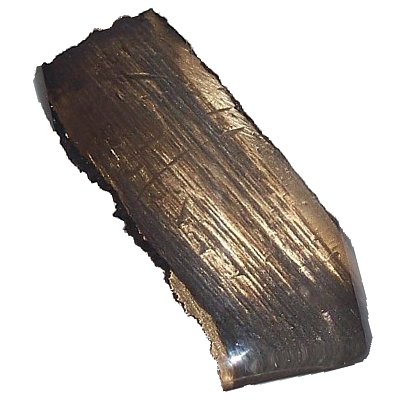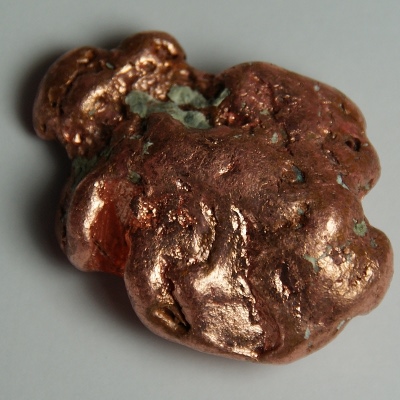Periodic Table Element Comparison: Compare Elements - Uranium vs Copper
Compare Uranium and Copper
Compare Uranium and Copper on the basis of their properties, attributes and periodic table facts. Compare elements on more than 90 properties. All the elements of similar categories show a lot of similarities and differences in their chemical, atomic, physical properties and uses. These similarities and dissimilarities should be known while we study periodic table elements. You can study the detailed comparison between Uranium vs Copper with most reliable information about their properties, attributes, facts, uses etc. You can compare U vs Cu on more than 90 properties like electronegativity , oxidation state, atomic shells, orbital structure, Electronaffinity, physical states, electrical conductivity and many more.
Facts
| Name | Uranium | Copper |
| Atomic Number | 92 | 29 |
| Atomic Symbol | U | Cu |
| Atomic Weight | 238.02891 | 63.546 |
| Phase at STP | Solid | Solid |
| Color | Silver | Copper |
| Metallic Classification | Actinide | Transition Metal |
| Group in Periodic Table | group - | group 11 |
| Group Name | copper family | |
| Period in Periodic Table | period 7 | period 4 |
| Block in Periodic Table | f -block | d -block |
| Electronic Configuration | [Rn] 5f3 6d1 7s2 | [Ar] 3d10 4s1 |
| Electronic Shell Structure (Electrons per shell) | 2, 8, 18, 32, 21, 9, 2 | 2, 8, 18, 1 |
| Melting Point | 1408 K | 1357.77 K |
| Boiling Point | 4200 K | 3200 K |
| CAS Number | CAS7440-61-1 | CAS7440-50-8 |
| Neighborhood Elements | Neighborhood Elements of Uranium | Neighborhood Elements of Copper |
History
| Name | Uranium | Copper |
| History | The element Uranium was discovered by H. Klaproth in year 1789 in Germany. Uranium derived its name from Uranus, the seventh planet in the Solar System. | The element Copper was discovered by Middle East in year 9000 BCE. Copper derived its name from English word (Latin cuprum). |
| Discovery | H. Klaproth (1789) | Middle East (9000 BCE) |
| Isolated | E.-M. Péligot (1841) | Anatolia (6000 BCE) |
Presence: Abundance in Nature and Around Us
Parts per billion (ppb) by weight / by atoms (1ppb =10^-7 %)
| Name | Uranium | Copper |
| Abundance in Universe | 0.2 / 0.001 | 60 / 1 |
| Abundance in Sun | 1 / 0.004 | 700 / 10 |
| Abundance in Meteorites | 10 / 1 | 110000 / 31000 |
| Abundance in Earth's Crust | 1800 / 150 | 68000 / 22000 |
| Abundance in Oceans | 3.3 / 0.086 | 3 / 0.29 |
| Abundance in Humans | 1 / 0.03 | 1000 / 99 |
Crystal Structure and Atomic Structure
| Name | Uranium | Copper |
| Atomic Volume | 12.495 cm3/mol | 7.124 cm3/mol |
| Atomic Radius | 175 pm | 145 pm |
| Covalent Radius | - | 138 pm |
| Van der Waals Radius | 186 pm | 140 pm |
| Atomic Spectrum - Spectral Lines | ||
| Emission Spectrum |  |  |
| Absorption Spectrum |  |  |
| Lattice Constant | 285.37, 586.95, 495.48 pm | 361.49, 361.49, 361.49 pm |
| Lattice Angle | π/2, π/2, π/2 | π/2, π/2, π/2 |
| Space Group Name | Cmcm | Fm_ 3m |
| Space Group Number | 63 | 225 |
| Crystal Structure | Base Centered Orthorhombic 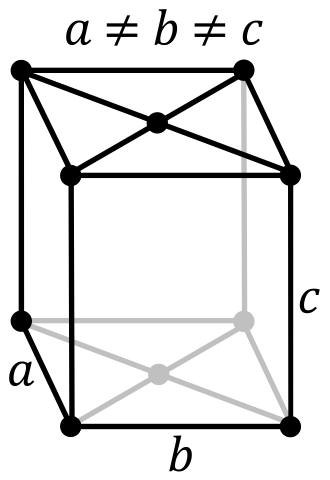 | Face Centered Cubic 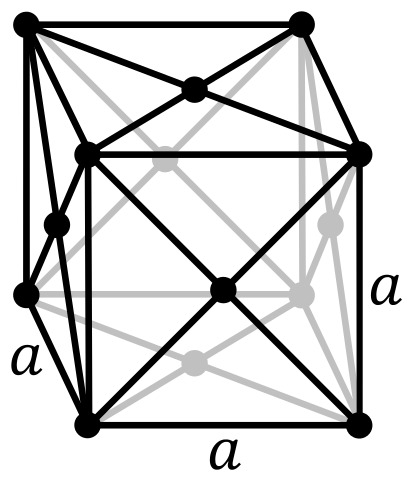 |
Atomic and Orbital Properties
| Name | Uranium | Copper |
| Atomic Number | 92 | 29 |
| Number of Electrons (with no charge) | 92 | 29 |
| Number of Protons | 92 | 29 |
| Mass Number | 238.02891 | 63.546 |
| Number of Neutrons | 146 | 35 |
| Shell structure (Electrons per energy level) | 2, 8, 18, 32, 21, 9, 2 | 2, 8, 18, 1 |
| Electron Configuration | [Rn] 5f3 6d1 7s2 | [Ar] 3d10 4s1 |
| Valence Electrons | 5f3 6d1 7s2 | 3d10 4s1 |
| Oxidation State | 4, 6 | 1, 2 |
| Atomic Term Symbol (Quantum Numbers) | 5L6 | 2S1/2 |
| Shell structure |  | 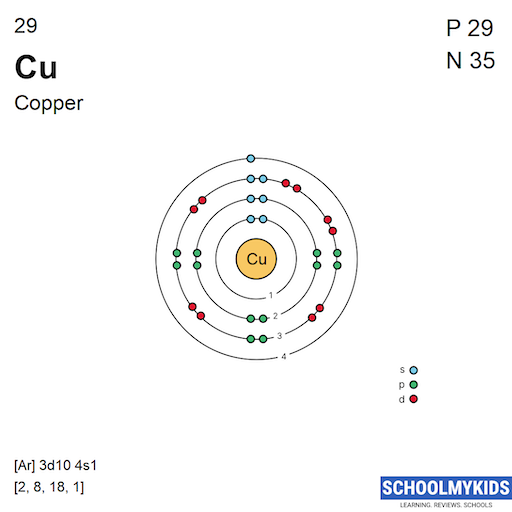 |
Isotopes and Nuclear Properties
Uranium has 0 stable naturally occuring isotopes while Copper has 2 stable naturally occuring isotopes.
| Name | Uranium | Copper |
| Known Isotopes | 217U, 218U, 219U, 220U, 221U, 222U, 223U, 224U, 225U, 226U, 227U, 228U, 229U, 230U, 231U, 232U, 233U, 234U, 235U, 236U, 237U, 238U, 239U, 240U, 241U, 242U | 52Cu, 53Cu, 54Cu, 55Cu, 56Cu, 57Cu, 58Cu, 59Cu, 60Cu, 61Cu, 62Cu, 63Cu, 64Cu, 65Cu, 66Cu, 67Cu, 68Cu, 69Cu, 70Cu, 71Cu, 72Cu, 73Cu, 74Cu, 75Cu, 76Cu, 77Cu, 78Cu, 79Cu, 80Cu |
| Stable Isotopes | - | Naturally occurring stable isotopes: 63Cu, 65Cu |
| Neutron Cross Section | 7.57 | 3.78 |
| Neutron Mass Absorption | 0.0005 | 0.0021 |
Chemical Properties: Ionization Energies and electron affinity
| Name | Uranium | Copper |
| Valence or Valency | 6 | 2 |
| Electronegativity | 1.38 Pauling Scale | 1.9 Pauling Scale |
| Electron Affinity | - | 118.4 kJ/mol |
| Ionization Energies | 1st: 597.6 kJ/mol 2nd: 1420 kJ/mol | 1st: 745.5 kJ/mol 2nd: 1957.9 kJ/mol 3rd: 3555 kJ/mol 4th: 5536 kJ/mol 5th: 7700 kJ/mol 6th: 9900 kJ/mol 7th: 13400 kJ/mol 8th: 16000 kJ/mol 9th: 19200 kJ/mol 10th: 22400 kJ/mol 11th: 25600 kJ/mol 12th: 35600 kJ/mol 13th: 38700 kJ/mol 14th: 42000 kJ/mol 15th: 46700 kJ/mol 16th: 50200 kJ/mol 17th: 53700 kJ/mol 18th: 61100 kJ/mol 19th: 64702 kJ/mol 20th: 163700 kJ/mol 21st: 174100 kJ/mol 22nd: 184900 kJ/mol 23rd: 198800 kJ/mol 24th: 210500 kJ/mol 25th: 222700 kJ/mol 26th: 239100 kJ/mol 27th: 249660 kJ/mol 28th: 1067358 kJ/mol 29th: 1116105 kJ/mol |
Physical Properties
| Name | Uranium | Copper |
| Density | 19.05 g/cm3 | 8.92 g/cm3 |
| Molar Volume | 12.495 cm3/mol | 7.124 cm3/mol |
Elastic Properties | ||
| Young Modulus | 208 | 130 |
| Shear Modulus | 111 GPa | 48 GPa |
| Bulk Modulus | 100 GPa | 140 GPa |
| Poisson Ratio | 0.23 | 0.34 |
Hardness - Tests to Measure of Hardness of Element | ||
| Mohs Hardness | 6 MPa | 3 MPa |
| Vickers Hardness | 1960 MPa | 369 MPa |
| Brinell Hardness | 2400 MPa | 874 MPa |
Electrical Properties | ||
| Electrical Conductivity | 3600000 S/m | 59000000 S/m |
| Resistivity | 2.79e-7 m Ω | 1.7e-8 m Ω |
| Superconducting Point | 0.68 | - |
Heat and Conduction Properties | ||
| Thermal Conductivity | 27 W/(m K) | 400 W/(m K) |
| Thermal Expansion | 0.0000139 /K | 0.0000165 /K |
Magnetic Properties | ||
| Magnetic Type | Paramagnetic | Diamagnetic |
| Curie Point | - | - |
| Mass Magnetic Susceptibility | 2.16e-8 m3/kg | -1.08e-9 m3/kg |
| Molar Magnetic Susceptibility | 5.14e-9 m3/mol | -6.86e-11 m3/mol |
| Volume Magnetic Susceptibility | 0.000411 | -0.00000963 |
Optical Properties | ||
| Refractive Index | - | - |
Acoustic Properties | ||
| Speed of Sound | 3155 m/s | 3570 m/s |
Thermal Properties - Enthalpies and thermodynamics
| Name | Uranium | Copper |
| Melting Point | 1408 K | 1357.77 K |
| Boiling Point | 4200 K | 3200 K |
| Critical Temperature | - | - |
| Superconducting Point | 0.68 | - |
Enthalpies | ||
| Heat of Fusion | 14 kJ/mol | 13.1 kJ/mol |
| Heat of Vaporization | 420 kJ/mol | 300 kJ/mol |
| Heat of Combustion | - | - |
Regulatory and Health - Health and Safety Parameters and Guidelines
| Name | Uranium | Copper |
| CAS Number | CAS7440-61-1 | CAS7440-50-8 |
| RTECS Number | RTECSYR3490000 | RTECSGL5325000 |
| DOT Hazard Class | 7 | 4.1 |
| DOT Numbers | 2979 | 3089 |
| EU Number | EU231-170-6 | - |
| NFPA Fire Rating | - | 1 |
| NFPA Health Rating | - | 1 |
| NFPA Reactivity Rating | - | 0 |
| NFPA Hazards | - | - |
| AutoIgnition Point | - | - |
| Flashpoint | - | - |

